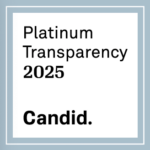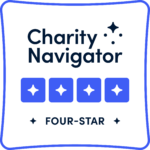The US Food & Drug Administration sounds ready to test the idea of having sponsors submit a high-level overview of plans and objectives in specific drug development areas like dosing as a mechanism to further improve interactions to support “Breakthrough” drug development.
The proposal to pilot test “Drug Development Snapshots” as a new communication tool is one proposal offered in a Friends of Cancer Research “white paper” on optimizing the Breakthrough Therapy pathway at FDA. During a 20 September webinar hosted by FOCR, FDA medical officer Martha Donaghue – who heads OCE’s “Project Beyond Breakthrough” – described the idea as “very exciting.”
“We at FDA do understand that at the time of Breakthrough Therapy Designation, the data are preliminary for many aspects of development,” Donaghue said. “Just getting a high-level view of what the sponsors would like to communicate with us would really help us go forward together in a way that is best for everyone.”
“I think that this could really go a long way towards … breaking down some of the barriers to communication,” Donaghue said. “A mechanism to in a relatively easy way communicate high-level information to help decision making throughout drug development” should help both FDA and the sponsor “know enough to be able to highlight certain pain points that might need to be addressed in a timely way and also provide an avenue for discussion.”
The “Snapshot” idea stands out as a concrete, actionable next step in the FOCR-led effort to optimize the “Breakthrough” pathway. It also clearly appeals to OCE as part of a separate effort to encourage greater attention to dosing issues for novel oncology therapies.
FOCR kicked off the “Beyond Breakthrough” effort last fall, and the “white paper” reflects input from a broad working group that met to discuss areas to build on what industry and FDA has been a successful first decade with the new pathway. OCE and its director, Richard Pazdur, have embraced the initiative and formalized the effort as one of the Office’s many designated “projects.”
(Also see “Oncology ‘Beyond Breakthrough’ Takes Shape: FDA Project Will Create Benefits ‘Menu,’ Rescission Process” – Pink Sheet, 26 May, 2021.)The idea is outlined in the “White Paper” as one of a series of approaches to enhancing the communication between FDA and sponsors over Breakthrough applications, recognizing that current approaches sometimes result in delays when specific issues don’t line up with regular milestone meetings and interactions.
“A strength of BTD is the product-specific dialogue provided through cross-functional structured interactions between the FDA and sponsors, which involves senior leadership at FDA,” the White Paper notes.
“However, challenges may be encountered at different times and in different areas of drug development depending on the drug development program. Identification of challenges may not align with milestone meetings that are typically attended by cross-functional groups within the FDA and the drug development team, which can result in delays addressing these issues.”
“Voluntary submission of high-level information in the form of periodic Drug Development Snapshots on certain development topics or issues by the sponsor could help prompt earlier identification of rate-limiting aspects of development (e.g., dosing, CMC/Product quality aspects, diagnostic co-development, plans for confirmatory trials if accelerated approval pathway is anticipated, etc.), serve as a vehicle to support information exchange, and help determine when meetings outside of the normal milestone cadence would be most beneficial.”
The notion that the “snapshot” is ready to implement is underscored by the inclusion of a sample template as an appendix to the white paper. The sample focuses on the clinical pharmacology aspects of the drug development plan – which aligns well with OCE’s ongoing effort to encourage new thinking on dose-development in oncology via “Project Optimus.” (Also see “US FDA’s ‘Project Optimus’ Will Encourage Move Away From Conventional Dose-Finding For Modern Cancer Therapies” – Pink Sheet, 26 May, 2021.)
Sponsor representatives from Novartis AG, Seagen Inc. and Roche Holding AG/Genentech, Inc. indicated a willingness to consider participating in a pilot test of the “snapshot” approach during the FOCR panel discussion – albeit with caveats about needing to learn more.
Another near-term opportunity to enhance “Breakthrough” communications will come via a new set of meeting types that will be created under the PDUFA VII agreement. Donoghue noted specifically the new “Type D” meeting called for under the agreement, which is intended to allow for a more focused discussion of one or two topics with “less burden” for both the FDA and the sponsor to schedule and participate. (Also see “PDUFA VII Communications: Earlier PMR Talks, Formal Meeting Additions” – Pink Sheet, 24 Aug, 2021.)
Other ideas proposed in the White Paper include efforts to enhance internal communication between centers at FDA, with sponsors highlighting the importance of assuring that the device center is engaged with the drug or biologic center on Breakthrough-designated therapy that includes a device component.
Longer-term efforts include better defining the timeline for when to seek BTD and what criteria are necessary to support a designation, as well as greater clarity around when and how BTD can be rescinded.
The FOCR meeting also provided another forum for OCE’s Pazdur to call for simplification in FDA’s overall menu of expedited pathways.

